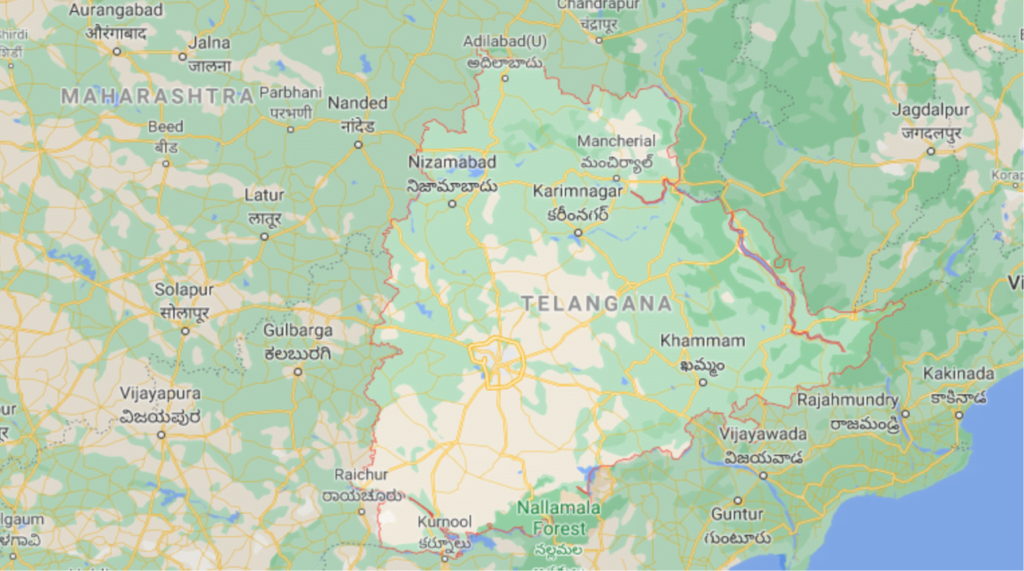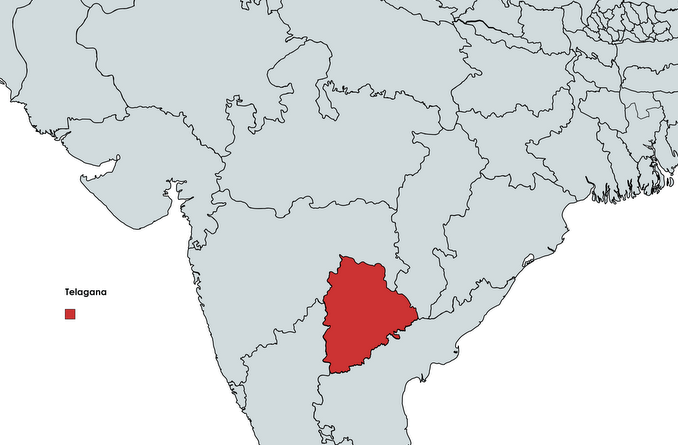Telangana state Formation Day
Context:
The Prime Minister has extended best wishes to the people of Telangana on the occasion of state’s Formation Day.
Telangana Formation – Timeline of Events
- The region of Telangana was part of the erstwhile Hyderabad State ruled by the Nizam.
- In 1955, the States Reorganisation Committee (SRC) recommended the retention of Hyderabad as a separate state. This recommendation was, however, not taken.
- The people of Telangana protested that the region was more backward than the coastal regions of Andhra and also alleged that there were injustices in the distribution of budget allocation, employment opportunities and water.
- On 1st November 1956, Telangana was merged with the state of Andhra Pradesh, uniting all Telugu-speaking people.
- The movement for Telangana continued in the region. There were ‘Jai Telangana’ and ‘Jai Andhra’ movements.
- There were violent agitations as well particularly in 1969 and 1972 in which many people were killed in police firing.
- After the 1969 agitation, the then Prime Minister Indira Gandhi gave the 6-point formula for the fast-paced development of the backward areas and for preferential treatment to local candidates for employment.
- In 1997, the BJP supported the formation of a separate state. In 2001, K Chandrasekhara Rao formed the Telangana Rashtra Samithi (TRS) to revive the movement.
- In the various elections held in the state of Andhra Pradesh, the people voted for TRS and gave a public impetus to the movement.
- In 2009, there was a huge boost to the movement when Rao went on a hunger strike for a separate Telangana, reminding people of the hunger strike and ultimately death of Potti Sreeramulu (Born on March 16, 1901) who agitated for the state of Andhra.
- Many young people also committed suicide for the movement.
- In 2010, the Srikrishna Committee was appointed to “bring about a permanent solution” to this issue. The committee stated in its report that efforts must be made to bring about equitable development to the three regions of the state of Andhra Pradesh, and it recommended a united Andhra Pradesh.
- However, owing to pressure, the Union cabinet approved a bill for the bifurcation of the state.
- The Andhra Pradesh Reorganisation Bill was passed in 2014. Hyderabad was suggested as a common capital. It will remain so for not more than ten years after which it will be the capital of Telangana alone, and Andhra Pradesh would get a new capital.
- The new state of Telangana was formed on 2nd June 2014.
The Andhra Pradesh Reorganisation Bill, 2014 (Telangana)
- The Andhra Pradesh Reorganisation Bill, 2014 was introduced in Lok Sabha on February 13, 2014 by the Minister for Home Affairs, Mr. Sushil Kumar Shinde.
- The Bill provides for the reorganisation of the state of Andhra Pradesh. It carves out a separate state called Telangana comprising 10 districts of the existing state of Andhra Pradesh.
- Formation of Telangana: The newly formed state of Telangana will comprise of the following districts of Andhra Pradesh: Adilabad, Karminagar, Medak, Nizamabad, Warangal, Rangareddi, Nalgonda, Mahbubnagar, Khammam and Hyderabad.
- Andhra Pradesh and Telangana will have a common capital, Hyderabad, for 10 years. After this period, Hyderabad shall be the capital of Telangana only. The central government will constitute an expert committee to recommend a new capital for Andhra Pradesh within 45 days of this Bill’s enactment.
- Role of Governor: The Governor of the existing state of Andhra Pradesh shall be the common Governor for both states for a period determined by the President. As part of the administration of the common capital area of Hyderabad, he shall be responsible for (i) security of life, liberty and property, (ii) law and order, (iii) internal security, (iv) security of vital installations, and (v) management and allocation of government buildings.
- Representation in Parliament: After the bifurcation, Andhra Pradesh will have 11 seats in Rajya Sabha, and Telangana will have 7. In Lok Sabha, Andhra Pradesh will have 25 seats and Telangana will have 17 seats.
- Representation in the Legislative Assembly and Council: After the bifurcation, the total number of seats in the Legislative Assembly (L.A.) for Andhra Pradesh will be 175 and for Telangana will be 119. Further, the Governor may nominate one member each, from the Anglo Indian community, to the LAs of the successor states. The Legislative Council (L.C.) of Andhra Pradesh will have a maximum of 50 members, and Telangana, 40 members.
- High Court: The High Court at Hyderabad shall be the common High Court for the successor states for a period of time. Following this, it shall become the High Court for the state of Telangana, and Andhra Pradesh shall get a new High Court.
- Revenue Distribution: The resources allocated by the 13th Finance Commission to the existing state of Andhra Pradesh will be apportioned between the two successor states on the basis of population ratio and other parameters. The centre may make grants to the successor state of Andhra Pradesh.
- Treasury and bank balances: The cash balances and credit balances of the existing state of Andhra Pradesh will be divided between the two successor states on the basis of population ration. This apportionment will be carried out by adjusting the credit balances of the two states in the books of the Reserve Bank of India.
- Polavaram Irrigation Project: The central government will execute the irrigation project in consultation with the governments of Andhra Pradesh and Telangana.
- Centre’s assistance for police forces: The central government will assist the two successor states in raising additional police forces. Further the centre will maintain the Greyhound Training Centre in Hyderabad for a period of three years, common to both states for that period. After this, the training centre shall belong to Telangana. The Greyhound and OCTOPUS forces of the existing state of Andhra Pradesh shall be re distributed between the two successor states. The centre will assist the successor state of Andhra Pradesh in setting up a similar training centre.
- The Bill also proposes consequential amendments to The Representation of the People Act, 1950, the Delimitation of Parliamentary and Assembly Constituencies Order, 2008, and First and fourth schedule of the Constitution of India.

Note
- Four icons of Telangana are:
- State Bird – Palapitta (Indian Roller or Blue Jay).
- State Animal – Jinka (Deer).
- State Tree – Jammi Chettu (Prosopis Cineraria).
- State Flower – Tangedu (Tanner’s Cassia).
- These icons reflect the culture and tradition of Telangana state and three of them – Tangedu flowers, Palapitta and Jammi Chettu are associated with the popular festivals of Bathukamma and Dasara, while Jinka reflects the mindset of the people of Telangana as it is very sensitive and innocent.
Source: The Hindu


